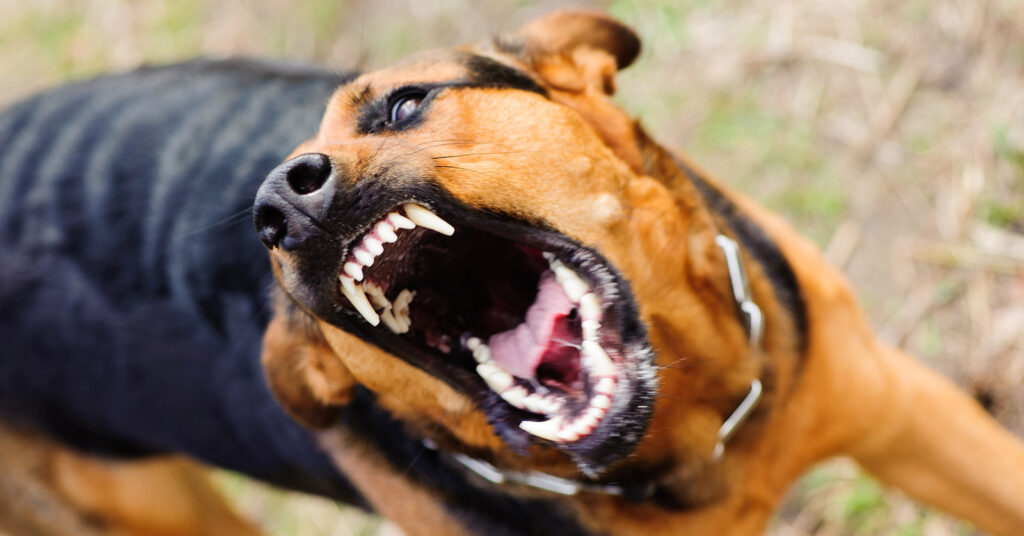
According to the American Veterinary Medical Association, some 4.7 million people are bitten by dogs each year, and about 17 percent require medical attention. But dogs are not the only animals that occasionally bite humans.
A bite from any animal that breaks the skin puts you at risk for infection, whether from the saliva of an animal that’s been rooting through garbage or the rare but more serious risk of rabies. Bites from larger animals, such as coyotes, can cause injury and disfiguring.
Very few animal bites are life threatening, but it pays to know what to do if you or someone you know, especially a child, is bitten.
TYPES AND CAUSES OF ANIMAL BITES
Domestic animals, including dogs, cats, ferrets and domesticated rodents such as hamsters, live with humans as pets. Because they rely on us for food and shelter, their loyalty and affection can make them seem like part of the family. it’s important to remember that all animals, even pets, can bite if provoked or ill.
While dog bites are the most common domestic animal bite, cats sometimes bite, too. Because their teeth are longer and sharper than dog’s teeth, a cat’s bite can cause a more serious puncture wound.
Animals that roam free in the wild (or in neighborhoods) such as bats, skunks, raccoons, foxes, and coyotes, and more rarely, stray cats and dogs, will occasionally bite humans. Normally such animals are merely hunting for food, but if threatened, they can pose a greater risk to humans.
THE CONCERN ABOUT RABIES
Some animals are infected with a virus that causes rabies. While rabies is uncommon in cats and dogs in the United States, the disease is more common in wild animals like raccoons, skunks, bats and coyotes. Infected animals often behave erratically, and a bite from any unknown animal should be treated as a medical emergency.
The concern about rabies arises when the vaccination status of an animal is unknown. Even if we don’t see the erratic behavior and foaming dramatized in movies, an animal can still be infected.
If you are bitten by a stray or unfamiliar animal, call animal control. They will try to find the animal to test it for rabies. If you know who owns it, ask for the pet’s health records, which will show all vaccinations, including rabies, and the dates they were administered. To be on the safe side, a pet that has bitten a human should be isolated—kept inside the house or a penned area—for 10 days while monitoring for signs of rabies. If the animal shows signs of the disease, testing will indicate whether the bite victim will require rabies shots, a series of about five injections over a two-week period.
TREATING SUSPECTED ANIMAL BITES
Animal bites are not always obvious, especially in children. Look for the following signs after a run-in with an animal:
- Breaks or cuts in the skin
- Puncture wounds
- Bruising
- Exposed muscle or bone
Treat the wound immediately with the following procedure:
- Wash your hands thoroughly before and after treating the wound.
- Apply pressure to the wound with a clean, dry cloth until the bleeding stops or subsides.
- Wash the wound with mild soap and warm water and rinse for 3-5 minutes under clean running water.
- Apply a sterile bandage and keep the wound elevated above the heart.
Seek medical care within 24 hours of any bite that breaks the skin. Seek immediate medical care for deep wounds or bites on the neck, head, face, hands or feet. Watch for redness, swelling, warmth or pus, which may indicate an infection. Your doctor may recommend a course of antibiotics or a tetanus shot.
PREVENTION
Never tease or provoke an animal, even your own pet. This includes “playful” wrestling, tug of war, or pulling its ears or tail. Teach children not to approach strange animals, and never leave a young child alone with a pet. Never try to separate fighting animals or disturb a pet while they’re eating. Maintain your pet’s vaccinations and avoid contact with animals that are sick or have unknown vaccination status.
If you encounter a sick or injured animal, do not approach or touch them. Call animal control. They will determine whether an animal with suspected rabies should be isolated or euthanized.
WORK CITED
“Animal Bites.” Texas Health and Human Services. https://dshs.texas.gov/idcu/health/zoonosis/animal/bites/information/bite7-20.pdf
“Animal Bites – Self Care.” Medline Plus Medical Encyclopedia. National Institutes of Health/U.S. National Library of Medicine. Last reviewed: April 2018. https://medlineplus.gov/ency/patientinstructions/000734.htm
“Cat and Dog Bites.” Family Doctor. The American Academy of Family Physicians. Last Updated: June 11, 2020 https://familydoctor.org/cat-and-dog-bites/
“Coyotes and people: What to know if you see or encounter a coyote.” The U.S. Humane Society. https://www.humanesociety.org/resources/coyotes-people-encounters
Martin, Justin. “What’s Behind the Coyote Attacks in North Texas?” KERA News, April 9, 2019. https://www.keranews.org/texas-news/2019-04-09/whats-behind-the-coyote-attacks-in-north-texas
“Overview of Dog Bites.” Texas Health and Human Services. https://dshs.texas.gov/IDCU/health/zoonosis/animal/bites/information/Overview-of-Dog-Bites.aspx





